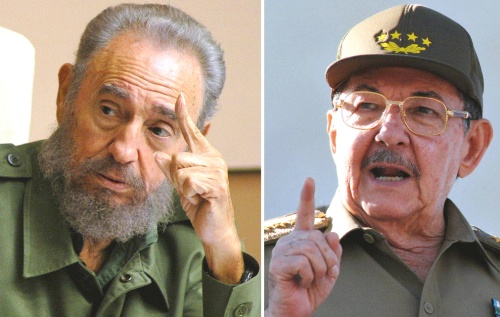The Pope visits Cuba in March. Paul Keenan examines the island nation’s recent record.
What to believe about Cuba? Since the ‘retirement’ of Fidel Castro, the island nation’s leader of 47 years in favour of baby brother Raul in 2008, it was tempting to believe that the change of regime — albeit kept within the family — might signal a loosening of the communist grip on its people.
Reports emanating from the country of new laws allowing for barber shops to transfer to private ownership (2010) and legislation towards the private ownership of property (enacted last November) suggested a break of sorts with the past and the potential of more progress in the future. Such an analysis was boosted in 2011 when, first, and as part of Catholic Church negotiations with the government, nearly 100 dissidents were released in batches, many on condition they accepted exile from their native country.
Then, on Christmas Eve, the government made good on a promise to release no fewer than 2,900 prisoners as part of a major amnesty.
In announcing the latter move, President Castro said it clearly demonstrated the ”generosity and strength” of the Cuban revolution and had been undertaken partially in response to news that Pope Benedict XVI would undertake a visit to the country.
Said amnesty covered people more than 60 years of age, prisoners who were ill, women and some young prisoners who had no previous criminal record, as well as a few prisoners who had been convicted for crimes against ‘the security of the state’.
What a difference the new year can make, however.
One of those who did not benefit from the December amnesty was Wilman Villar Mendoza, a 31-year-old human rights activist.
Arrested in November for his participation in a march to highlight ongoing human rights abuses in Cuba, he had just begun his four-year imprisonment for that ‘crime’ when, on January 19, he died as a result of his hunger strike protest against the sentence. His death is the second as a result of hunger strike in two years — Orlando Zapata Tamayo died in February 2010.
Just days after Mendoza’s death, Cuba’s ruling (and only) party, the Cuban Communist Party (CCP) met for its annual national conference at which it made soundings around a ”democratic framework” for the country, but went on to ratify a proposal that the party remain the only officially recognised political party on the island, for the better ”unity of Cubans and its revolution”.
To avoid any lingering confusion around the apparent mixed messages, the party members listened respectfully as President Raul Castro took a swipe at those perceiving radical movement in his societal initiatives, stating: ”There has been no shortage of criticism and exhortations by those who have confused their intimate desires with reality, deluding themselves that this conference would consecrate the beginning of the dismantling of the political and social system the revolution has fought for more than half a century.”
Relations
Nor is there any reason, in the current world climate, for Cuba to begin on such a path.
Having endured — with and then without the assistance of the Soviet Union — a US-enforced trade embargo for 50 years (an anniversary marked on February 2), the recent shifting of economic power with the global credit crunch has presented Cuba with a friendly trading partner in the newly emerged China, building upon trade relations already in existence with oil-rich Venezuela.
On February 1, President Dilma Rousseff, leader of the southern economic powerhouse that is Brazil, visited Havana, and described herself as ”honoured” to meet with Fidel Castro before signing various trade agreements with the administration. Also, since 2009, relations between Cuba and Russia have reignited, driven in part by the island’s emerging offshore oil industry. All of which has led Raul Castro to call on Washington to finally normalise relations and not to remain ”chained to the past”.
For all this, the changes that have come for ordinary Cubans do suggest a slow transition to a freer existence. The experiences of the country’s human rights activists is again illustrative.
Throughout the period in which the authorities have clamped down on calls for greater human rights — begun in 2003 — the now famed Ladies in White have staged a weekly protest on prisoners’ behalf at the Santa Rita Church in Havana. For the greater part of that time, the women have been harassed and attacked by pro-government elements. It was after one such attack that the Catholic Church protested, beginning the dialogue with Raul Castro which resulted in the freeing of the dissidents in 2011. The protests continue now under the protective eye of the Church.
Do not be surprised, then, if Pope Benedict finds himself surrounded by smiling ladies in white garb when he visits the country in March.
What further progress Cuba makes in the wake of his visit, and on the back of the messages he brings, remains unknown at this point.
Whatever transpires, it will be too late, of course, for both Wilman Villar Mendoza and Orlando Zapata Tamayo, but both were aware no doubt, as Cubans, that the struggle would be long but the outcome potentially great.
Viva la Revolucion.


 Paul Keenan
Paul Keenan
